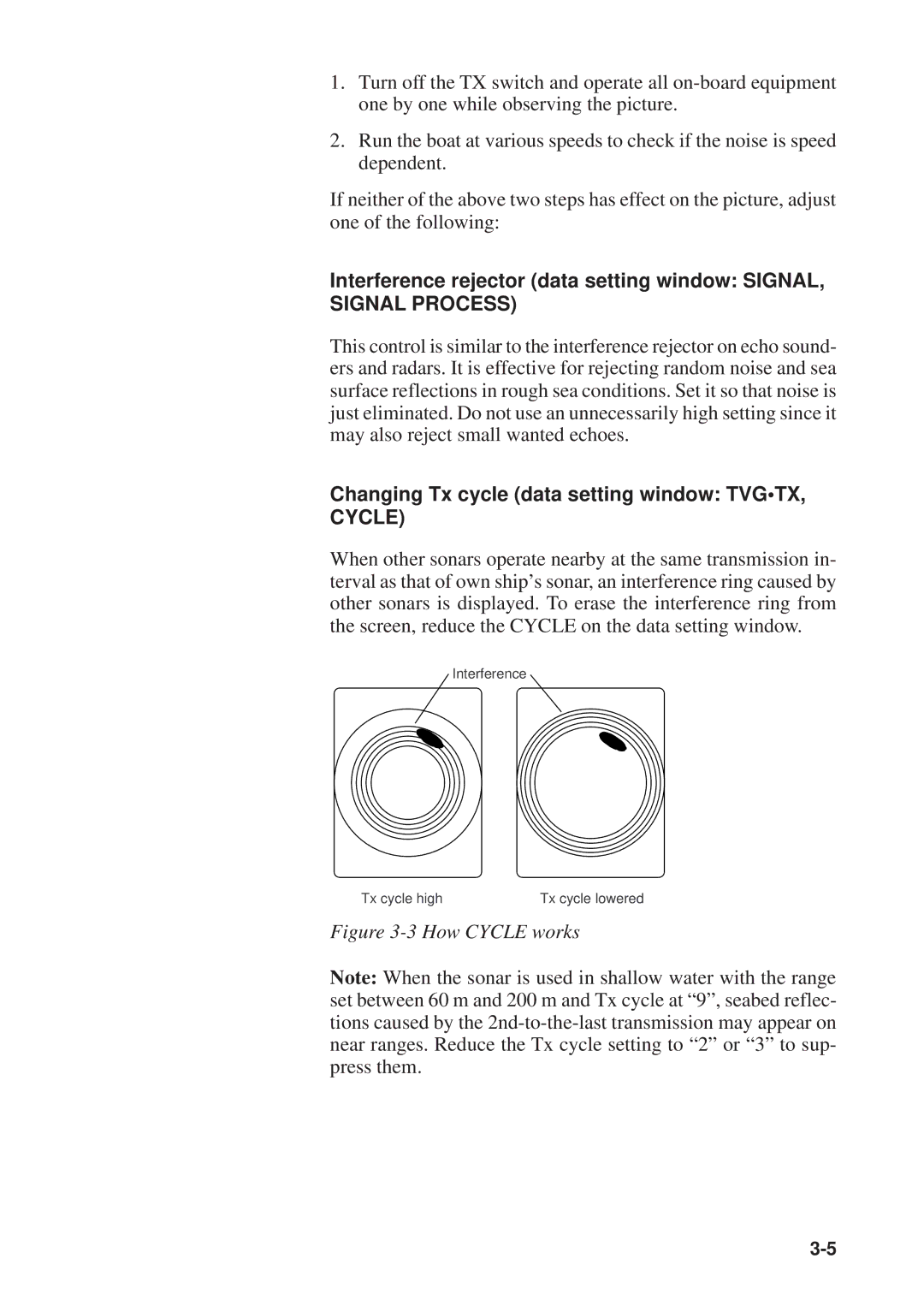
1.Turn off the TX switch and operate all
2.Run the boat at various speeds to check if the noise is speed dependent.
If neither of the above two steps has effect on the picture, adjust one of the following:
Interference rejector (data setting window: SIGNAL, SIGNAL PROCESS)
This control is similar to the interference rejector on echo sound- ers and radars. It is effective for rejecting random noise and sea surface reflections in rough sea conditions. Set it so that noise is just eliminated. Do not use an unnecessarily high setting since it may also reject small wanted echoes.
Changing Tx cycle (data setting window: TVG•TX,
CYCLE)
When other sonars operate nearby at the same transmission in- terval as that of own ship’s sonar, an interference ring caused by other sonars is displayed. To erase the interference ring from the screen, reduce the CYCLE on the data setting window.
Interference
Tx cycle high | Tx cycle lowered |
Figure 3-3 How CYCLE works
Note: When the sonar is used in shallow water with the range set between 60 m and 200 m and Tx cycle at “9”, seabed reflec- tions caused by the
